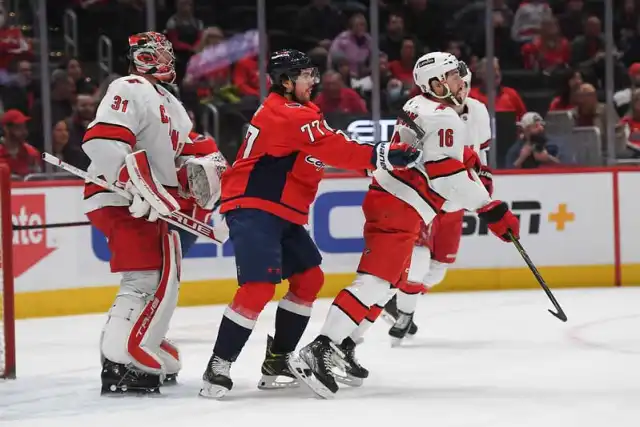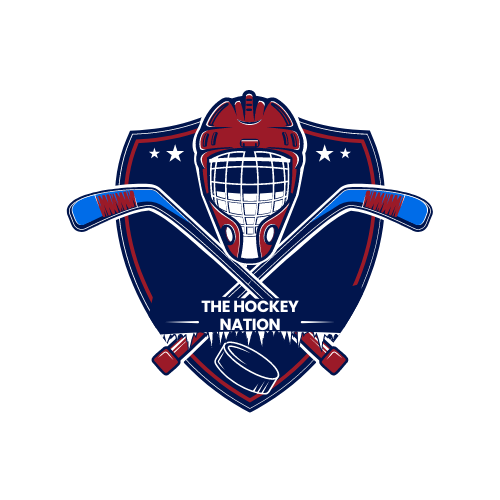Cross-checking in hockey is like giving your opponent a not-so-friendly reminder with the stick: “Hey, watch out!” Luckily, it’s a move even referees can’t miss.
After the act, it’s judgment time for the referees – penalty or not, that’s the question! Protect yourself from these stick shenanigans by exploring our selection of hockey sticks and gloves! #StaySafeOnTheIce
Video Example of Cross-Checking
In the intense video clip, watch as the Avalanche player (dark jersey) delivers a hard hit from behind to the Lightning player (white jersey) with a forceful Cross-Checking motion.
Gripping his stick firmly with both hands, he shoves the Lightning player into the boards, compounding the situation by striking after the puck was released. This action earned the Avalanche player a five-minute Major Penalty for Cross Checking.
Valuable Read: What does NHL Stands for?
Cross-Checking Referee Sign

The referee, signaling a violation, will make a fist with both hands and spread them about two feet apart, positioned at chest level.
This clear gesture establishes the boundary for the players. Following this, a deliberate forward motion will be executed by the referee with both hands moving in unison, ensuring fair play and adherence to the rules.
Penalties for Cross Checking

Like most other penalties in ice hockey, the severity of the infraction plays a crucial role in determining the type of penalty assessed. For instance, in the case of Cross-Checking in hockey, a Minor Penalty (two minutes) is typically called.
However, if the referee perceives that a player’s actions were deliberately aimed at injuring their opponent, various more severe penalties may be imposed.
These could include a Major Penalty (five minutes), a Match Penalty (which results in the removal of the player in addition to a five-minute penalty), or a Game Misconduct Penalty (resulting in the removal of the player along with a 10-minute penalty).
It ultimately rests on the discretion of the referee to decide the appropriate penalty corresponding to the nature of the infraction.
Official NHL Cross Checking Rule Text (Rule 59)
The action of using the shaft of the stick between the two hands to forcefully check an opponent is a common defensive move in hockey.
This technique, known as stick checking, involves applying pressure with the stick to disrupt the opponent’s advance or regain possession of the puck.
It requires precision and timing to effectively thwart the opposing player’s progress on the ice.
Avoiding Cross-Checking Penalties
The key thing about a hockey Cross-Check is when you hit an opponent with your stick. So, if the first contact is with the shoulder or back, not the stick, it’s considered a legal hit even if you’re in the Cross-Checking position.
Actions Similar to Cross-Checking

Defenders positioned in their zone utilize a strategic approach by gripping the stick with both hands to fortify their defensive stance in front of the goal.
This defensive maneuver not only fulfills the essential criterion for cross-checking but also exemplifies their dedication to thwarting opposing advances.
Moreover, these vigilant defenders may employ their sticks to exert pressure on rivals through calculated pushes and shoves, thereby satisfying the additional requirement for cross-checking.
In instances where such assertive actions occur, the discerning referee meticulously evaluates the intensity with which the defender executes these maneuvers.
A penalty is promptly enforced if the referee deems the player’s actions to be forceful enough to merit a charge of cross-checking.
It is worth noting that referees typically exercise leniency in such scenarios, recognizing the inherent physicality of players vying for a strategic position in proximity to the goal.
Conclusion
Cross-checking in hockey is like that sneaky move where a player grabs the stick with both hands and gives a little nudge to the opponent. It’s usually a mix of frustration from a past game or wanting to defend a teammate.
You know what’s also funny? Sometimes defenders in their zones might do stuff that looks a bit like cross-checking. Picture this – they’re just pushing and shoving with their opponent to get that prime spot in front of the net.
